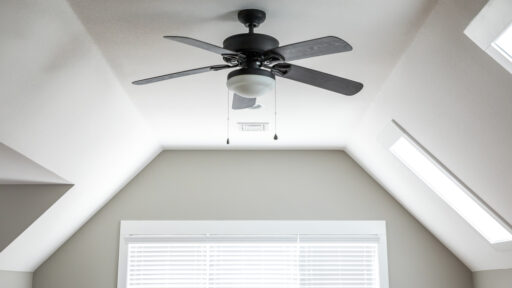Modern living spaces are shrinking, but that doesn’t mean we have to sacrifice comfort. In fact, with the right strategies, you can make the most of your space without compromising on coziness or functionality. Whether you’re living in a compact apartment or a home with smaller rooms, achieving the perfect balance between comfort and space is essential. Explore detailed size comparisons for better space use and discover how to maximize every inch of your home. This article will explore practical tips and design ideas to help you create a home that feels spacious yet comfortable, and how to use smart furniture and layout choices to make every inch count.
Why Comfort and Space Matter Together
Before diving into the solutions, let’s understand why the balance between comfort and space is crucial in today’s homes. Comfort is often associated with warmth, relaxation, and a sense of well-being, while space refers to openness and the ability to move freely without feeling cramped. When either of these elements is lacking, the result is an unbalanced, sometimes even stressful, living environment.
In modern homes, especially in urban areas, space is often at a premium. While large homes and expansive floor plans may be a thing of the past for many, creating a comfortable, efficient space is still very much achievable. By focusing on a few key principles of design and layout, you can optimize your living areas, making them more inviting and livable.
1. Choose the Right Furniture
The right furniture can make or break your ability to balance comfort and space. Opting for space-saving yet cozy furniture pieces is essential when working with limited square footage. Look for multifunctional items that serve more than one purpose. For example, a sofa that doubles as a bed or a coffee table with hidden storage can go a long way in maximizing both comfort and functionality.
When choosing pieces, consider the scale. Oversized furniture can make a room feel claustrophobic, so always measure your space before purchasing. Look for furniture that fits the room proportionally, and avoid overcrowding the space with too many pieces.
Tip: Invest in items that offer both comfort and practicality, such as a well-cushioned yet compact sofa or a folding dining table.
2. Explore Detailed Size Comparisons for Better Space Use
In modern homes, every square inch counts. Understanding size comparisons and how different furniture pieces fit within your room layout is crucial. By exploring detailed size comparisons, you can make more informed choices when it comes to selecting items that won’t overwhelm your space.
For example, if you’re trying to decide between a queen-sized bed or a full-size bed for your master bedroom, understanding the differences in dimensions will help you visualize how each will impact your room’s overall feel. The queen bed may provide more comfort but take up extra space, while the full-size bed could free up additional room for other furnishings or movement.
Similarly, small-scale furniture like compact dining tables or side chairs can make a significant difference in ensuring the room remains comfortable without losing valuable space.
3. Embrace Vertical Space
In small homes, one of the best ways to optimize space while keeping things comfortable is by utilizing vertical space. From floor-to-ceiling bookshelves to tall storage cabinets, vertical storage solutions help keep your floors free and clear, giving your rooms a more open and airy feel.
In addition to storage, vertical design elements can also add to the room’s decor. Wall-mounted lighting fixtures, art, and mirrors draw the eye upward, creating the illusion of height and space. High shelves or hanging plants can add personality and greenery to your space, making it feel both fresh and functional.
Tip: Opt for open shelving in kitchens or bathrooms to keep things easily accessible while maintaining a light and airy feel.
4. Incorporate Smart Layouts and Flow
The layout of your home plays a significant role in the balance between comfort and space. An open-plan design can help create a sense of spaciousness, particularly in small homes. By eliminating unnecessary walls and using partitions or open shelving, you can create defined areas without blocking off the natural flow of the space.
When arranging furniture, avoid pushing everything up against the walls. Instead, create zones within the room that allow for easy movement and circulation. In living rooms, for example, consider a seating arrangement that encourages conversation, with the sofa facing a central focal point like a TV or a fireplace.
Tip: Use rugs or furniture to define different sections within a single room, making it feel both spacious and organized.
5. Opt for Light Colors and Reflective Surfaces
Color plays a significant role in making a space feel larger and more inviting. Light colors, such as whites, pastels, and light grays, reflect light and help the room feel open and airy. On the other hand, dark colors can make a space feel more enclosed, which may not be ideal for smaller rooms.
Additionally, reflective surfaces like mirrors, glass furniture, or shiny metal fixtures can enhance the feeling of space by bouncing light around the room. A well-placed mirror or reflective surface can make even the smallest rooms appear larger.
Tip: Consider painting walls in light shades and adding metallic accents to bring a sense of brightness and depth.
6. Keep Clutter to a Minimum
Clutter is one of the main culprits when it comes to reducing the sense of space in a home. Keeping your space organized and clutter-free is essential in maintaining the balance between comfort and space. Regularly assess what you need and what you don’t, and be sure to store away items that aren’t in use.
Decluttering your space not only helps make the room feel larger but also contributes to a sense of calm and comfort. Utilize creative storage solutions such as under-bed storage, closet organizers, or multi-purpose furniture to keep your essentials within reach but out of sight.
7. Choose Soft Textiles and Layered Comfort
While it’s important to keep your space uncluttered, comfort is key. Layered textiles, such as plush throws, cushions, and rugs, can help make a room feel cozy without taking up much space. Opt for soft, breathable fabrics like cotton, linen, and wool, which can provide comfort while also allowing for airflow.
Layering different textures can also add depth to the space, making it feel more inviting. For example, pairing a soft throw with a velvet cushion can create a rich, tactile experience without overwhelming the space.
Tip: Use lightweight fabrics in bright colors or patterns to add warmth and style without feeling too heavy or bulky.
Conclusion
Finding the balance between comfort and space in modern homes is about making thoughtful design choices and using your space efficiently. By selecting the right furniture, exploring size comparisons, embracing vertical space, and creating a smart layout, you can transform even the smallest homes into comfortable, functional havens. Whether you’re looking for a minimalist approach or a cozy, curated design, it’s possible to have it all with the right strategies in place. Keep these tips in mind, and your home will be a perfect blend of comfort and space—no matter the size.








